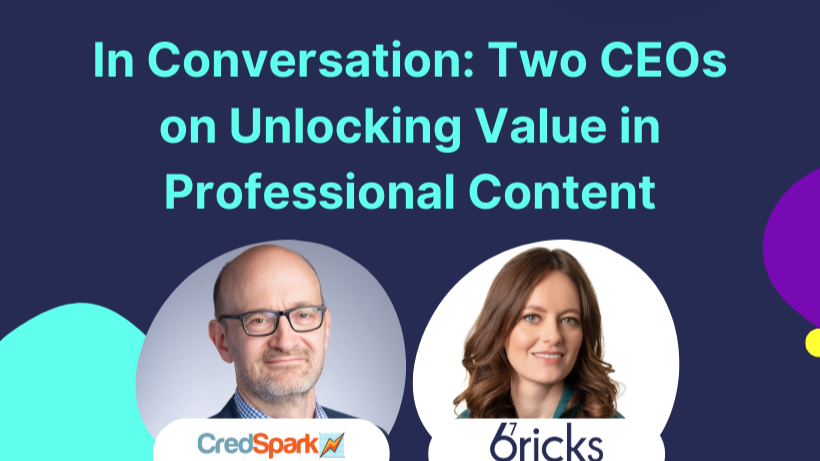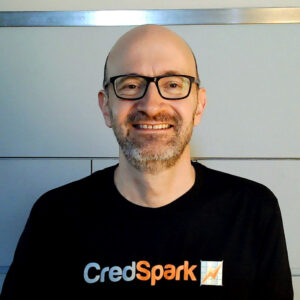Why is unlocking value in professional content such a critical topic in today’s attention economy?
Lev: I see a couple of AI-driven trends converging.
- The explosion in AI-powered ‘zero-click’ search raises the bar on all creators/publishers of professional content; you need to be the authoritative, preferred information destination for your audience, with content that can inform business decisions, not merely answer quick questions.
- There are very few professions which seem immune to disruption by AI in the next 3-5 years. Professionals will recognize that they need to learn/adapt, and they’ll look to trusted sources for career guidance.
- Integration into workflows – professional audiences don’t just want information, they want insight at the right moment, in the right context, saving time and reducing friction.
- Data-driven products – by linking content with data, publishers can open up new forms of value, from richer analysis to predictive services that customers can’t get elsewhere.
- Shifting from content to capability – it’s not about delivering articles, it’s about enabling professionals to solve problems faster, work smarter, and operate with confidence.
When you think about ‘value’ in professional content, how do you define it?
Jennifer: I define it in terms of what it enables the end user to do. For me, value isn’t measured by page views or download counts. It’s measured by outcomes:
- Does this content help a professional make a better decision, faster?
- Does it reduce risk or give them confidence in a complex situation?
- Does it uncover opportunities they wouldn’t otherwise see?
In an era of misinformation and AI-generated noise, the brand and reputation behind professional content is a critical part of its value
- Trusting AI’s Accuracy
- Trusting AI’s Intentions
- Trusting AI’s Benefits
What are some of the most common mistakes you see organizations make when trying to increase the value of their content?
Lev: First, an extremely common mistake is assuming that the relevance of your content is obvious to a given audience member. Someone’s job title, prior event attendance or online behavior such as emails opened doesn’t tell you much about what’s on their mind. A huge amount of measurable behavior is taken as an indication of intent, but nearly all the time, intent is being inferred, not actually declared by that individual.
Despite how lovingly we’ve crafted our content, we can’t assume its value is obvious to the average busy and distracted professional.
Can you share an example where unlocking content’s value had a measurable impact?
Jennifer: Since this has been our core business for nearly 20 years, it’s hard to pick just one example! With Chemical Watch, we implemented semantic fingerprinting to connect content and users in unique ways. That not only powered new product development and personalized user experiences, but also drove a 40% increase in repeat revenues and was a core strategic asset in their successful sale to Enhesa. One of the most striking examples is our work with The Economist Intelligence Unit. Together, we created Viewpoint, a platform that brings together enviable content and world-class data in one place. The results were transformative: a 95% retention rate, and that year they rose to >£50m annual recurring revenue. Just as importantly, it gave EIU’s clients precision tools to weigh risks and opportunities across markets, countries, and industries. The flexibility of the platform proved crucial. For example, when the Ukraine–Russia war broke out, we were able to help EIU rapidly launch a new theme page, combining tailored content and search capabilities so clients could navigate fast-changing risks at a critical moment. We’ve also helped the British Medical Journal create a flexible ‘Knowledge Base’ that underpins their Best Practice platform and app. The new data structure enabled BMJ to launch the world’s first comorbidities tool to be used in a professional setting at the point of care, improving patient outcomes and cutting costs. Nearly 90% of surveyed users said Best Practice had a direct impact on their clinical practice. What ties all of these together is simple: when organizations truly get to grips with their existing assets and structure them in the right way, the value they can unlock, both for their users and their business, is transformative. Lev: CredSpark’s work with clients is all about unlocking the power of asking questions to create more personalized, relevant experiences for their audiences. An easy win for our clients is more efficiently connecting audience members to the content they’re interested in, as in the example of Fusable (a leading audience data provider for industrial markets) which saw a jump from 1% to 45% of readers clicking through to a recommended article once they implemented our interactive strategy to learn more about their audience. Another client, Instinct, which keeps veterinary staff current with practical insights and real world advice, has used CredSpark’s platform to repurpose existing content as interactive content, resulting in more than 2 million engagements with that content in its new form. That same client sees 27% of their audience engage with daily polls on their home page, making that home page a daily destination for readers. I’d love to say what CredSpark does is rocket science, but really it’s just the effective application of common sense. An audience is composed of humans, and humans tend to appreciate being approached conversationally, vs. having content blasted at them.
What role does data play in creating more valuable content offerings?
Lev: We think of two categories of data: Behavioral and Declarative. Behavioral Data is ‘where did someone click, scroll, open, download, etc.’ and is mostly captured passively by content creators. Declarative Data is gathered from asking direct questions of those who interact with your content: What do they know? How well do they understand a given topic? What are they interested in? What concerns them? Behavioral data capture online began in the late 1990s and is now commonplace. But it’s not sufficient to give us a well-rounded sense of an individual professional, and the risk of misinterpreting online behavior – to assume it means something it does not – is very high. That’s where Declarative Data comes in as an additive. The combination of the two – Behavioral and Declarative – is what gives content producers the ability to capture what’s most important to audience members, and adapt existing content based upon that intelligence. More data = More guidance in editing = More value to the audience. Jennifer: On its own, content is static. Data is live, dynamic and endlessly flexible, if collected and architected properly. Bringing the two together, marrying information and insight, opens the door to new ideas, new products and new revenue. So, instead of publishing once and hoping for impact, you can use data to continuously refine, personalize, and extend what you offer – and crucially, reduce the time it takes for users to get value. For example, you might use engagement data to restructure long reports into modular formats that readers actually finish; tailor insights and guidance by surfacing content based on a user’s role and past behaviour; or turn popular conference sessions into year-round intelligence products linked with external datasets. Done well, this creates offerings that are not only more useful but also harder to replicate, because they’re grounded in your unique combination of content and data.
Where have you seen AI make the biggest difference – and where is the potential still untapped?
Jennifer: We’ve already seen AI make a tangible difference across our client work, from podcast generation and interactive chat interfaces, to automated claims checking in complex pharma information sets, and using event data to extend engagement year-round. In all of these, the biggest gains come when AI accelerates human expertise rather than replaces it, which is why we focus on human-in-the-loop products that keep outputs accurate and trusted. Increasingly, we’re working in areas that move beyond efficiency into predictive and prescriptive decision support: tracking sentiment on key topics at scale and recommending how to adjust messaging before a trend breaks, monitoring regulatory changes and flagging the operational implications and next steps, and even generating adaptive business plans with realistic actions and budgets.
The more we can help professionals turn signals into actions...then the more essential our products will become.
Looking three years ahead, what will the most successful professional content companies be doing differently from today?
Lev: Nearly 10 years ago on a panel, I told a room of professional publishers that I saw them instead as teachers, and there were audible gasps. The reason we can instantly recall our favorite teachers and mentors, even decades later, is because they gave us the information, guidance, and encouragement to shape our futures
The best professional content companies will expand their remit and think both longer-term and more holistically about fostering professionals’ growth.
Any final thoughts?
Jennifer: If your content vanished tomorrow and your customers could still do their jobs, you don’t have value. You have noise. Lev: Treat your audience as you’d treat your mother: Reach out regularly and ask questions, think of how best to help them, and try to make them proud.

Jennifer Schivas
Jennifer Schivas is the CEO of 67 Bricks. She holds advisory and non-executive roles with Cadmore Media, Enterprise Oxfordshire, and the Oxfordshire Economic Partnership Board. She is also a regular conference speaker and chairs Renewd’s AI Strategy Council.


